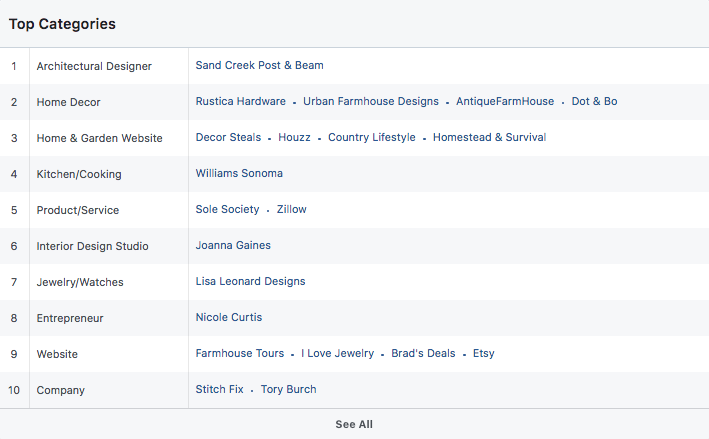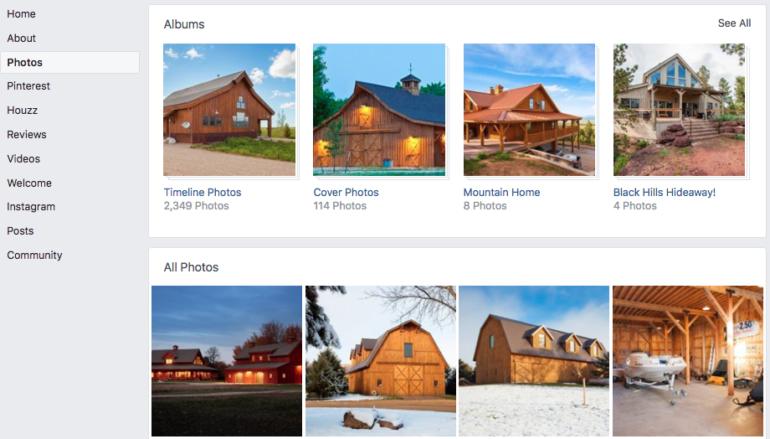February 28, 2018
One of the great advantages of advertising on Facebook is the ability to fine-tune your audience targeting using the platform’s research tools. With Facebook’s Audience Insights tool, you can go beyond high-level demographics (location, age, gender, etc.) and identify the specific interests, websites, publications and content topics that your current customers (and similar customers) consume and share.
Not knowing your audience is a big mistake! But doing audience research can be cumbersome, it takes a lot of time. And research tools that make big promises often fall short. Still, the labor of research has to be done if you want to take advantage of Facebook’s fine tuning and content insights.
In this post, we’re going to show you some super effective shortcuts using the Audience Insights Tool to gather the information needed to develop buyer personas, spy on your competitors and discover where your target audiences consume content and what content resonates the most with them. As we move through this exercise, we are going to finish with a list of at least 25 interests or topics that we can use to create targeted audiences or audience layers (for larger audience segments) to help us reach the right people on Facebook with our ads.
Facebook Competitors, Interests, Pain Points – Get Your Thoughts On Paper (or Spreadsheet)
Before we even login to Facebook, we should fire up a spreadsheet (or deploy more old school tactics like pen and paper). We’ll start by writing down everything that we know about our target customers, our target niche, and our target markets in an organized fashion.
Now, ask yourself, who are the big players in the space? Where are they consuming information that is relevant to them; websites they frequent, magazines they read, Pages they visit on Facebook, companies they follow, athletes they admire, things their kids do, etc. What kind of topics and interests resonate with them on a regular basis? Write it down!
Go beyond their interests and really dig into what drives them as individuals. What are their backgrounds, what are their responsibilities, what are their challenges and pain points? What kind of content are they consuming and where are they consuming it, and on what channels? How can we help them? Write it down…
Start to document all of this on your spreadsheet or paper. Break it up into three categories – competitor research, niche topic research and customer pain points and needs:
- As we look at the information available to us in the Audience Insights Tool, the basis of our competitor research is to understand who the major players are and what type of content they are using on Facebook to engage their audiences.
- The main objective of niche research is to understand at a deeper level the other related topics and channels where content is being consumed by your target audiences.
- Writing down your target customer’s pain points and needs that your products and services specifically address will make it easier to develop great content ideas when we start looking at your competitor’s Pages.

Facebook Interests – Know What You Don’t Know
Okay, we’ve got the known direct competitors, interests and audiences traits documented. Now it’s time to fine-tune our targeting and niche down even further.
Navigate to the Audience Insights Tool and click on “Everyone on Facebook”. Scroll down the left-hand side of the page and type in your client or company name in the “Interests” field.
Take a look at the “Demographics” information. If you know your audiences already, there should be no surprises here.
Still, take a moment to evaluate this information. How does it compare to your initial assumptions or previous research from other channels? Is it the same? Is it different? If it is different, it’s good information to note for future Facebook targeting efforts as your core audiences may be different on this platform than others, including your own website traffic. (Fine-tune this information even more by filtering the age and gender – and locations if applicable – to match your target customers or site traffic.) Make notes and adjustments on spreadsheet or paper.
Next, navigate to the “Page Likes” dashboard and look at the “Top Categories” sections to discover closely related competitors also prominently found on Facebook. As you scan down you may see some familiar names. But most likely, you are going to see a bunch of companies you never even knew existed that are attractive, relevant and interacting with your target customers. Some of them will be your direct competition, while others will be places your customers consume content.

Click on their link and go directly to their Facebook page to validate they are worth targeting in your niche or market. In other words, if their products, services and content is trying to attract the same people/customers as you, write them down.
Discover Great Content Already Resonating With Your Target Market With Facebook Page Insights
This is where the good insights start to surface! When you click from the Audience Insights dashboard directly to their Facebook Page, you’ll find a goldmine of research information and content inspiration right at your fingertips. Begin perusing their Page and take note of the content and user engagement.
On the left-hand side of their Facebook Page, you’ll notice direct links that filter their content by several categories, most notably: About, Instagram, Photos, Posts, Videos, Community and several more depending on the publisher. Engage each link and dig deep to see what type of engagement they are getting. When you know what kind of engagement they are getting – positive or negative – you can discover ways to adapt the strategy to your own.

Take a look at each section and start taking notes:
- What kind of content are they publishing? Are they addressing their audience’s pain points, responsibilities and interests? In what format (posts, video, reviews)?
- Which topics and content resonates most with their Fans and receives the most Likes and Comments?
- Are there topics and discussion threads that reveal new information to you that could inform your strategy?
- Look at the competitor’s “About” section for great information you can incorporate into your strategies (or share with your client); Awards, Products, Product Categories, Our Story, Milestones, etc.
- Look at their Photos and Videos sections and note the type of content they are publishing; the good, the bad and the ugly. What types of content are getting the most views and engagement?
- Does a competitor feature their products in the “Shop and Review Products” section?
- Look at the Events section to see if they are promoting their events through Facebook. If so, what is noteworthy?
- What else…?
For instance, if your competitor is just posting click bait content it may be a way to increase engagement but may not complement your strategy. Instead, look for the ways competitors and relevant channels engage their customers that moves them down the sales cycle or reinforces a positive, lasting relationship. Write these insights down and start connecting your dots.
You can now use these insights to start developing audience targeting strategies that siphon off traffic from relevant channels or steals traffic from your competitors. And, you’ll know which kinds of content your audiences are interested in already.
Wrapping Up
Use your research insights to develop your own content marketing ideas that incorporate your unique value propositions and messaging. Go head-to-head with your closest competitors and promote relevant topics and content. Only better!